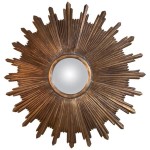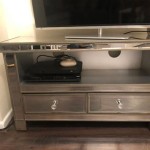Flat Screen TVs That Double As Mirrors
The desire for sleek, minimalist interiors has driven innovation in home technology, leading to the development of intriguing dual-purpose devices. Among these, the mirrored television stands out, offering the functionality of a high-definition screen seamlessly integrated with the reflective surface of a mirror. This technology allows homeowners to enjoy entertainment without sacrificing valuable wall space or compromising the aesthetics of their interior design.
How Mirrored TVs Work
Mirrored televisions achieve their dual functionality through a specialized two-way mirror, also known as a dielectric mirror. This type of mirror uses multiple thin layers of dielectric materials, typically metal oxides, to selectively reflect and transmit light. When the TV is off, the mirror coating reflects most ambient light, creating the appearance of a conventional mirror. However, when the TV is on, the light emitted from the display panel passes through the mirror coating while still reflecting enough light to maintain a subtle mirrored effect.
Types of Mirrored TVs
Several types of mirrored televisions are available to cater to various needs and preferences. These include fully integrated units where the mirror and TV are combined within a single frame, and partial mirror TVs where only a portion of the surface acts as a mirror. Additionally, some manufacturers offer custom solutions, allowing customers to specify the size and type of mirror to match their existing décor.
Installation and Placement
Installing a mirrored TV requires careful consideration of the surrounding lighting conditions. Excessive ambient light can wash out the display when the TV is on, while insufficient lighting can diminish its effectiveness as a mirror. Professional installation is often recommended to ensure optimal viewing angles and proper wiring concealment. The most common placement options include bathrooms, bedrooms, and living rooms, where they can seamlessly integrate with the existing décor.
Key Features and Considerations
Several key features differentiate mirrored TVs and influence their suitability for specific applications. These include the reflectivity of the mirror surface, the brightness and contrast ratio of the display panel, and the overall size and dimensions of the unit. Consumers should also consider the type of connectivity offered (e.g., HDMI, Wi-Fi), smart TV capabilities, and the availability of integrated speakers.
Advantages of Mirrored TVs
Mirrored televisions offer several advantages over traditional TVs. Their space-saving design is particularly appealing for smaller rooms or apartments. The integrated mirror functionality enhances the room's aesthetic appeal, adding a touch of elegance and functionality. Additionally, the hidden nature of the screen can contribute to a cleaner, less cluttered look when the TV is off.
Disadvantages of Mirrored TVs
While offering unique benefits, mirrored televisions also present certain drawbacks. The cost is typically higher than comparable-sized conventional TVs. The image quality can be affected by ambient light, and the mirror effect may not be as perfect as a dedicated mirror. Furthermore, the integration of the mirror and display can sometimes limit the viewing angles compared to a standard television.
Applications of Mirrored TVs
The versatile nature of mirrored TVs makes them suitable for a wide range of applications. In residential settings, they are popular choices for bathrooms, bedrooms, and living rooms. Commercial applications include gyms, hotels, and retail stores, where they can display information or entertainment while also serving as functional mirrors.
Comparing Mirrored TVs with Alternatives
Consumers considering a mirrored TV should also explore alternative solutions, such as projector screens with retractable mechanisms or strategically placed standard TVs. Comparing factors such as cost, image quality, installation complexity, and aesthetic preferences will help determine the most suitable option for each individual's needs.
Future Trends in Mirrored TV Technology
Ongoing advancements in display technology and mirror coatings are expected to further enhance the performance and aesthetics of mirrored TVs. Innovations such as improved brightness and contrast ratios, thinner profiles, and enhanced mirror reflectivity are likely to drive future development in this segment of the consumer electronics market.

Samsung Mirror Tv Design Your Perfect Framed Dielectric

How To Make A Mirror Tv Step By Instructions

Vanity Mirror Tv Vanishing Television For Your Bathroom

The Living Room Tv As We Know It Is Over Laurel Home

Creative Tvs With Rollable Screens Art Frames And Easels Wirecutter

How To Make A Mirror Tv Step By Instructions

I M Obsessed With Hiding Any Of Our Tvs Behind A Two Way Mirror This Seems Like Great To Do It Withou Home Decor Furniture Kincaid

Kincaid Keswick Solid Wood Double Vision Tv Mirror 83 117

How To Use Multi View On Samsung 2024 Frame Tv

Creative Tvs With Rollable Screens Art Frames And Easels Wirecutter








